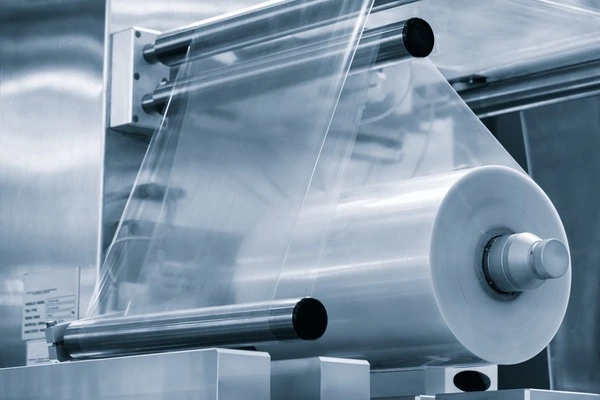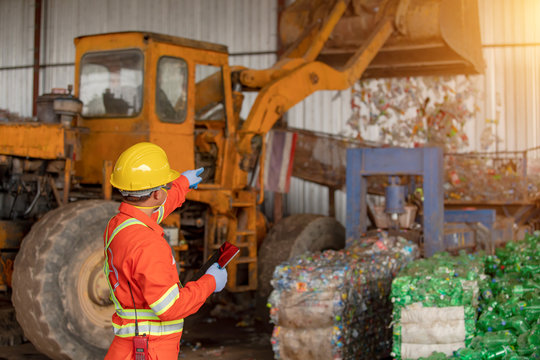Before you throw away a product with plastic on it, do you have thoughts about what happens to that plastic? Most of the standard boxes and bubble wrap we get are thrown away, which causes another burden for the environment. As people care more about rubbish and the environment, industries are encouraged to look for new answers. Many are using compostable films, but is it really the right answer?
Let’s take a look at the strengths and weaknesses of using compostable films to see whether they deserve to have a lasting place in packaging.
What Exactly Are Compostable Films?
Sustainable packaging films are a type of packaging material made from renewable plant-based ingredients like PLA (polylactic acid) or PBS (polybutylene succinate). Unlike conventional plastics derived from fossil fuels, these materials are designed to break down into harmless organic matter under industrial composting conditions.
In theory, they can fully decompose in 90–180 days in the right environment, turning into water, carbon dioxide, and nutrient-rich compost. That sounds like a dream, but there is more to the story.

The Pros of Compostable Films
1. They Help Cut Long-Term Waste
One of the strongest cases for sustainable packaging films is their role in reducing persistent waste. Since they are made to break down naturally, they don’t linger in the environment for decades or centuries. This makes them an ideal solution for packaging light, dry products that might otherwise be wrapped in single-use plastic.
At Aropack. we already making strides in this area, offering certified compostable laminates that combine functionality with sustainability. These materials can offer premium quality while still being kind to the planet.
2. Sustainable, But Still Sleek
Eco-friendly doesn’t have to mean unattractive. sustainable packaging films can be engineered to look and feel just as luxurious as traditional materials. Think soft-touch matte varnishes, high-clarity PET-like substrates, and sealant layers made with PE, all of which create a premium consumer experience.
Packaging can also be designed with clever features like K-seal or Doy-seal bases to suit different product weights and silhouettes. Even resealable zippers can be integrated into compostable formats without compromising barrier performance.
3. Lower Carbon Footprint Across the Supply Chain
Because flexible packaging, including sustainable packaging films, uses significantly less raw material compared to rigid formats, it’s more efficient to transport and store. Less packaging material means less weight, which translates to reduced shipping emissions and cost savings. A win for your business and the environment.
Additionally, using water-based adhesives, solvent-free inks, and minimal ink coverage enhances the eco-profile while keeping the visual impact intact.
The Cons of Compostable Films
1. Industrial Composting Required
Here is the catch, sustainable packaging films often need an industrial composting facility to properly break down. Unfortunately, these facilities are not available in all areas of the UK. If the film ends up in a standard landfill, it may behave like regular plastic and fail to decompose as intended.
This makes consumer education essential. Brands must be clear about how to dispose of compostable packaging properly, or risk it doing more harm than good.
2. Not Ideal for All Products
Sustainable packaging films work best for dry or shelf-stable products. They can struggle to match the moisture and oxygen barrier properties of high-barrier plastics, making them less suitable for wet or highly perishable goods.
That is where other options, like mono-material laminates (PE/PE or PP/PP) for recyclability or metallised PET for freshness, may still hold the upper hand depending on your product needs.
3. Higher Production Costs
Sustainable materials often come with a higher price tag. Sustainable packaging films can be more expensive to manufacture than traditional plastic packaging. For small businesses, this cost jump can be hard to justify, especially without consumer willingness to pay more.
However, as technology evolves and demand increases, these costs are expected to decrease, making compostable options more accessible for companies of all sizes.
Is Compostable Better?
There is no one-size-fits-all answer in packaging. Compostable films bring undeniable environmental benefits, but only when used and disposed of correctly. They are not a perfect substitute for every application. For example, mono-material recyclable films may be better suited for certain food products due to their longer shelf life and compatibility with existing recycling systems.
At Aropack, we are using LCA (life cycle assessment) tools to determine whether switching from rigid plastic to flexible compostable materials actually reduces their carbon footprint in the long run. It’s a decision that requires both data and intention.
What Makes Compostable Films Work Well?
When designed intelligently, compostable packaging doesn’t mean compromising on performance or appeal. Here are a few ways to get the best out of it:
- Functional Seal Structures: Doy-seal and K-seal bottoms provide support for different product weights and volumes.
- Premium Feel: Materials like soft-touch varnish and clear films offer aesthetic appeal without sacrificing sustainability.
- Barrier Films: Compostable options are being enhanced with high-barrier properties that still meet industrial composting criteria.
- Sustainable Printing: Water-based adhesives and low-ink coverage improve recyclability and reduce harmful residues.
With solutions like these, sustainable packaging films are far from a basic eco-swap, they are a thoughtfully engineered alternative for forward-thinking brands.
Wrapping Up!
The push for sustainability is real, and compostable packaging is playing a key role in this transformation. When chosen carefully and used correctly, they offer a tangible way for businesses to reduce waste, meet consumer demand, and stand out as environmentally responsible brands.
Still, sustainable packaging films are not a magic fix. They require the right infrastructure, a clear communication strategy, and ongoing innovation to truly deliver on their promise.
FAQ’s
-
What’s the difference between compostable and biodegradable films?
While both break down over time, compostable films decompose into natural elements in a compost environment without leaving toxic residue. Biodegradable films may take longer and don’t always meet composting standards.
-
Do compostable films actually help reduce plastic waste?
Yes, when disposed of correctly, compostable films break down into natural materials, helping to cut down on long-term plastic pollution and landfill build-up.




